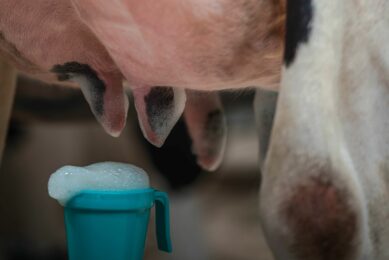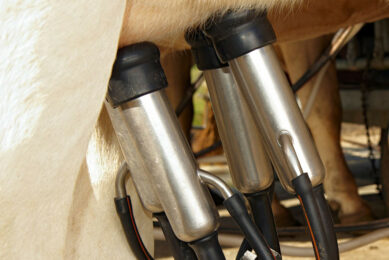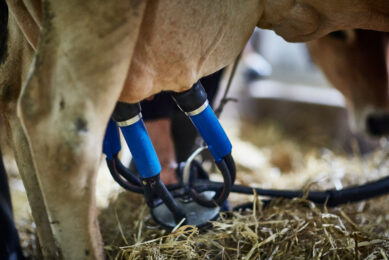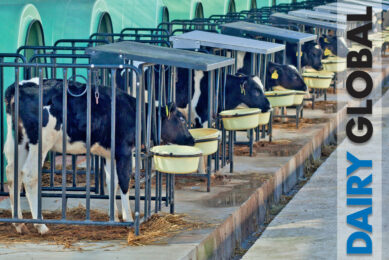Automatic milking and its effects
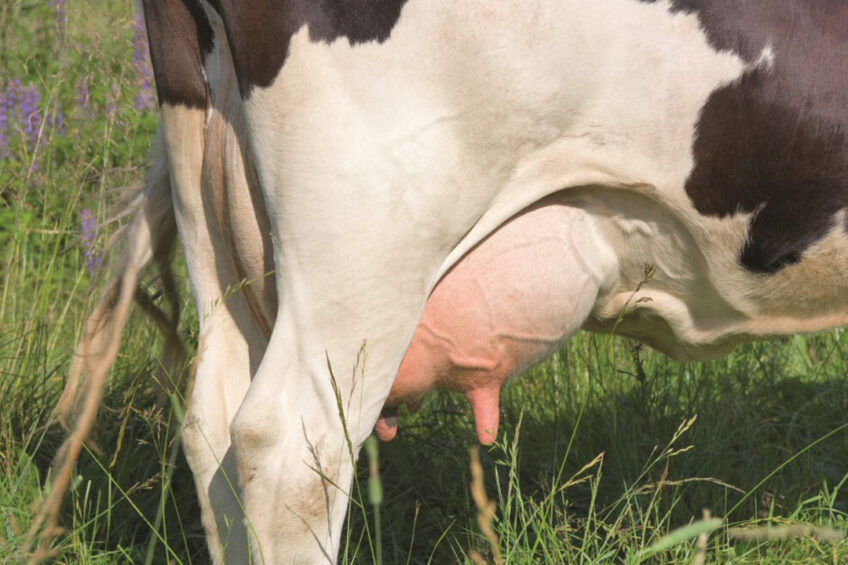
The dairy industry has adopted the automatic milking system (AMS) to increase milk yield and profit. An AMS may increase milk production by up to 12% and decrease labour by as much as 30%, in addition to being time-efficient.
It takes only about 5 minutes to milk out a cow with an AMS, since the machine will milk all 4 quarters at the same time. The benefits of using an AMS may not, however, be fully realised for a variety of factors, including system operation, cow management, milking frequency and weather conditions. The following is a review of these aspects, together with strategies for better use of an AMS.
Milk yield with AMS
In one study, cows in the AMS group yielded 2.4 kg/d more than cows in the conventional milking system. This system offers possibilities for more frequent milking and can be adapted to the lactation stage. The AMS also provides consistent milking routines, with teat stimulation and feeding during milking, giving an adequate oxytocin release and milk ejection.
A lack of increased production has, however, been reported from the field due to less attention being paid to the total management of the system and the milking cows. The following points should be considered when attempting to maximise milk yields under an AMS:
- The AMS should be maintained and operated under the manufacturer’s directions.
- The milking machine should be applied within 30-60 seconds after the udder is washed, since effective levels of oxytocin remain in the blood for only 6-8 minutes.
- Technical stoppages in the AMS and variations in the length of the milking interval should be avoided, as they seem to contribute to reduced milk yield and also affect milk quality by increasing milk somatic cell count (SCC).
- Dairy farmers should use practices that increase the amount of milk harvested per operator per hour rather than practices that affect only the number of cows milked per hour.
- Grazing cows should, by all possible means, be motivated to visit the milking parlour. A shorter distance between the barn and pasture, supplemental feeding, access to water and use of acoustic signals have been recommended.
- Old cows used to hand milking will have trouble adjusting to automatic milking machinery and hence need an adaptation period of up to 3 days, after which time the stress associated with machine milking is alleviated and milk yield is improved.
Milk yield under AMS may also be affected by weather conditions. In one study, milk yield was higher during the cold season than in the hot season (32.2 kg/d vs 28.8 kg/d). Thermoregulatory behaviours have reduced animal traffic towards the milking station under heat stress, thereby reducing milk yield. Beating heat stress in dairy cows via nutrition and modification of the microclimate would, therefore, increase the efficiency of AMS by increasing the traffic towards the milk station.
Milk composition
A study was conducted to compare the effect of AMS implementation on milk composition. Fat content increased by 0.16% and protein content by 0.06% in AMS-milked cows compared to conventional parlour-milked cows. Within the AMS, the frequency of milking may affect the fat and protein contents of milk.
When comparing twice-a-day milking with thrice-a-day milking, higher milk fat (4.45% vs 4.19%) and higher milk protein (3.47% vs 3.32%) were reported under the twice-a-day milking. It was also reported that shorter intervals between milking events under AMS led to an increase in milk fat content, but no such effect was noted with milk protein.
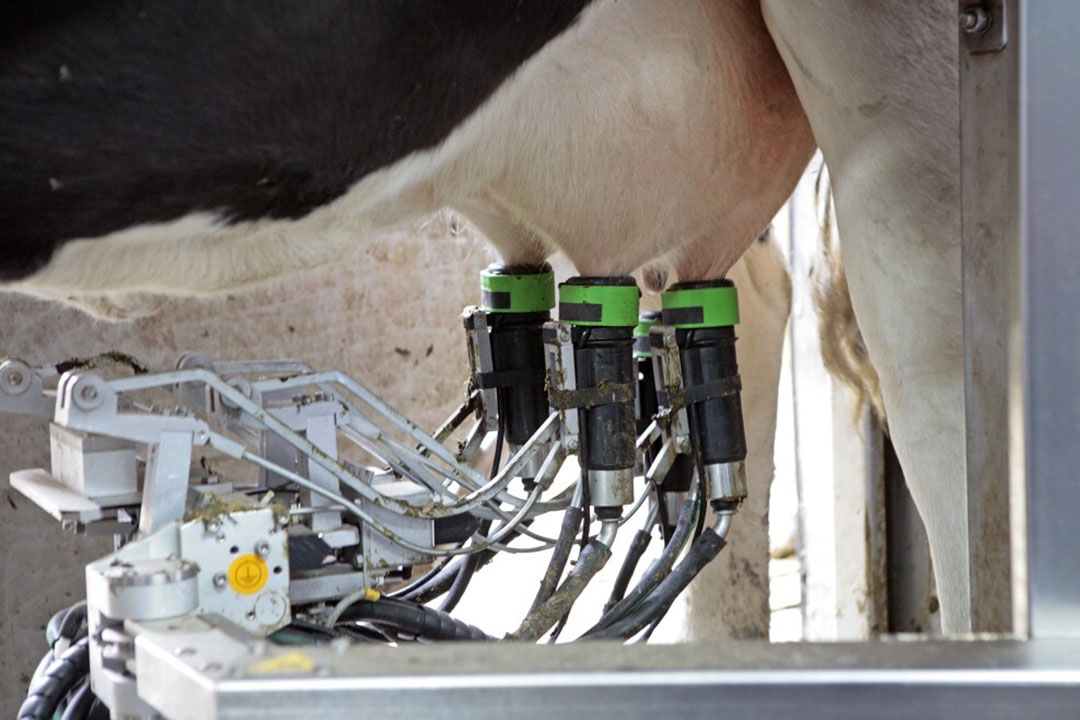
Milk quality
In a few cases, there have been elevated concentrations of free fatty acids (FFA) (1.13% in AMS vs 0.86 in conventional milking systems). FFA can give a rancid flavour in dairy products, presumably due to changing the ratio of fatty acids to fatty acid salt in milk. In terms of human safety, the increased level of FFA is associated with several cardiovascular risk factors due to their harmful effects on the myocardium.
There was also increased activity of the enzyme lipoprotein lipase in milk produced under the AMS. This leads to the accumulation of lipids in adipocytes and hence facilitates obesity. The exact mechanisms by which AMS affects milk quality are not fully understood, and the problem still needs to be solved.
Mastitis
The milking machine may affect the likelihood of mastitis by directly implanting pathogenic organisms into the streak canal, by engendering long-term deterioration of the teats and by serving as a reservoir of pathogens. Vacuum level and pulsation rate and ratio do not significantly affect udder infection, but undue fluctuations of vacuum can cause problems.
Measures to reduce this fluctuation include an adequate vacuum reserve, the correct choice of the liner, keeping air-admission holes in the claw pieces clear, positioning of jars and design of pipelines and efficient handling of the milking units. The udder health status in the period just before the transition to use of an AMS showed a large correlation with the udder health status afterwards.
Economics of AMS
The investment required for AMS is much higher than for conventional milking systems and thus the fixed costs of milking are higher. However, more milk with about 30% less labour means that the costs of milking per kilogramme of milk will decrease. Theoretically, with an AMS, more cows can be kept with the same labour force than with conventional milking, but this may involve additional investments in buildings, land or feed and perhaps in milk quota.
So, when deciding between investment in an AMS or a conventional milking system, dairy farmers must weigh decreased labour needs for the AMS against the increased fixed costs of the system. Most AMS farmers state social reasons for investing in automatic milking, such as increased labour flexibility and improved social life and health.
References are available from the author upon request.
Join 13,000+ subscribers
Subscribe to our newsletter to stay updated about all the need-to-know content in the dairy sector, two times a week.



